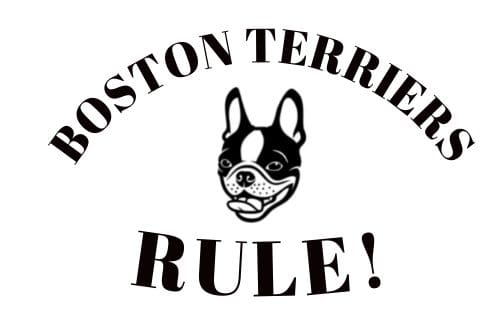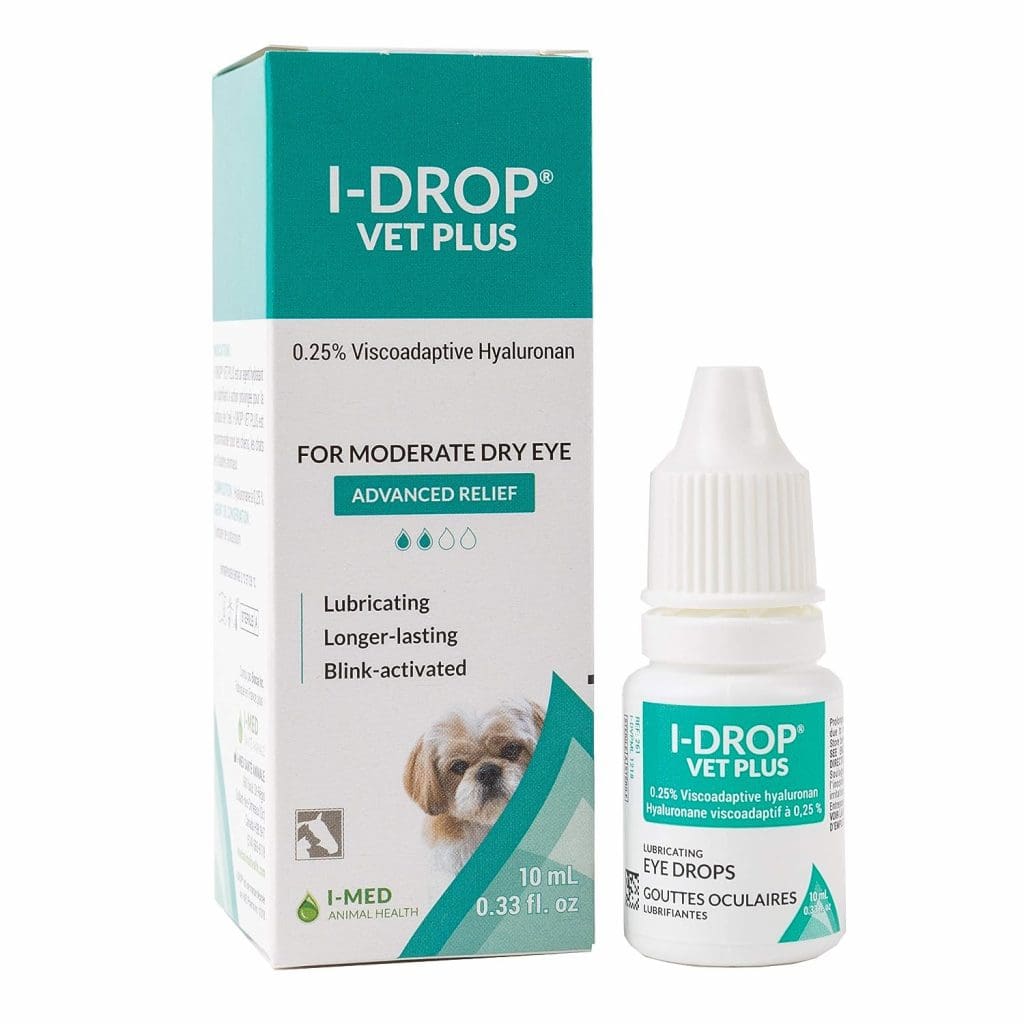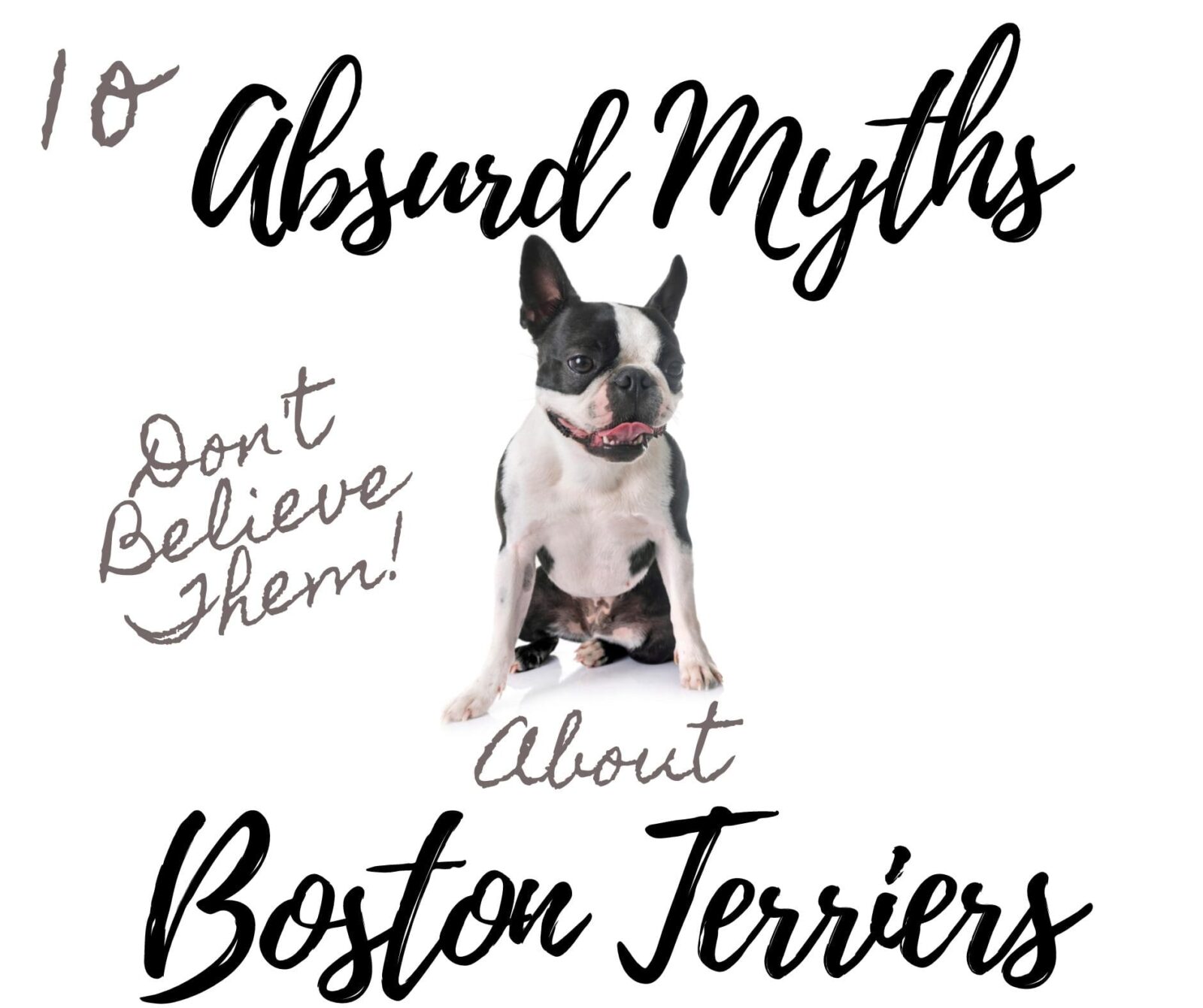From Puppyhood Onward
Introduction
Boston Terriers, known for their funny personality and distinctive, endearing eyes that captivate their owners. A Boston Terrier’s eyes are not only a window to their soul but also an essential aspect of their overall health and well-being.
In this article, I will talk about our Boston Terrier’s eyes, from their early development in puppyhood to potential eye issues, injuries, and helpful products to ensure their eyes remain healthy and happy.

Boston Terrier’s Eyes in Puppyhood: Early Eye Development
When Boston Terrier puppies are born, their eyes are tightly closed. They typically begin to open their eyes around 10 to 14 days after birth. Initially, their eyes may appear slightly hazy or blue, gradually transitioning to their true color over the following weeks.
In the enchanting realm of a Boston Terrier puppy’s early days, the journey of eye development commences with closed eyes. Upon their entrance into the world, the tight closure of their eyelids serves to protect their delicate eyes from light and potential foreign particles. During these initial days, their world is defined by touch, scent, and warmth. Their eyes remain securely shut, embracing the safety of darkness.
Around 10 to 14 days post-birth, a remarkable transformation unfolds as the Boston Terrier’s eyes embark on the journey to open. This pivotal milestone heralds a new chapter, allowing the world to slowly unfold before them. Initially, as their eyelids part, the clarity of their vision might be akin to a soft haze or a gentle blue hue. This ethereal beginning gradually matures, unveiling the distinct color that characterizes their unique gaze over the forthcoming weeks.
The transition of a Boston Terrier’s eyes from a nebulous hue to their true, characteristic color is an awe-inspiring marvel of nature. As the Boston Terrier puppies grow, their eyesight becomes a crucial aspect of their budding interactions with the world around them. The evolution of their eyes from that initial closeness to a world of vibrant hues marks the commencement of a lifetime filled with curiosity, exploration, and endless wagging tails.

Strabismus: When Boston Terrier’s Eyes Are Crossed or Crooked
Some Boston Terrier’s eyes may display a condition known as strabismus or “crossed eyes,” where one or both eyes may appear misaligned or crooked. This can result from genetic factors, trauma, or abnormal development of the eye muscles. While the condition may not affect the dog’s vision, severe cases might require surgical intervention to correct the alignment.
Strabismus manifests when one or both eyes deviate from their typical alignment, either converging inward (esotropia) or diverging outward (exotropia). This can be readily noticed, as the affected eye appears misaligned or crooked, setting it apart from its counterpart.
The origins of strabismus in Boston Terrier’s eyes may vary, often rooted in a combination of genetic predisposition, past trauma, or abnormal development of eye muscles. The genetic aspect suggests a hereditary predisposition, where certain lines of Boston Terriers may carry genes that contribute to this condition. However, it’s crucial to note that not all cases are genetic, and other factors, such as injury or issues during eye muscle development, can also lead to strabismus.

For Boston Terrier owners, observing their beloved pet with crossed eyes can initially evoke concern, particularly regarding their Boston Terrier’s eyes quality of vision and overall well-being. Fortunately, in many instances, strabismus doesn’t impact a dog’s vision or quality of life. The misalignment is primarily a cosmetic concern, with the affected Boston Terrier continuing to lead a fulfilling, joyful life. In fact, some owners find the endearing gaze of a Boston Terrier with crossed eyes to be an endearing and unique trait that adds to their charm.
However, in severe cases of strabismus where the misalignment significantly affects the dog’s vision or causes discomfort, surgical intervention may be considered. The surgical approach typically involves adjustments to the eye muscles, aiming to realign the eyes and restore a more natural appearance. Veterinarians, in collaboration with veterinary ophthalmologists, carefully evaluate each case to determine the best course of action tailored to the specific needs of the Boston Terrier.
In conclusion, strabismus or “crooked eyes” is a condition occasionally observed in a Boston Terrier’s eyes, where one or both eyes may appear misaligned or cross-eyed. The causes can range from genetic factors to trauma or abnormal development of eye muscles.
While the condition usually doesn’t impact a Boston Terrier’s vision, in severe cases, surgical procedures can provide solutions to correct the alignment, ultimately ensuring the dog’s comfort and enhancing their quality of life. For Boston Terrier owners, understanding the origins, effects, and potential interventions for strabismus is vital in providing the best care and support for their cherished canine companions. For a more in depth look at Strabismus in Boston Terriers, click here.

Common Issues with Boston Terrier’s Eyes and Diagnosis
Boston Terriers, like other breeds, are prone to certain eye conditions. These include:
Corneal Ulcers
a) Ulcers: Corneal ulcers can occur due to scratches, foreign objects, or irritants. Symptoms include excessive tearing, squinting, and sensitivity to light. A veterinary examination involving dye application can diagnose corneal ulcers.
Caution should be exercised when it comes to corneal ulcers in Boston Terrier’s eyes, as this ocular condition can be quite concerning. These ulcers manifest as open sores on the cornea, the eye’s clear, protective outer layer, and are analogous to similar issues seen in various dog breeds. Potential causes encompass scratches from foreign objects, irritants such as dust or debris, and sometimes self-inflicted injuries due to excessive eye rubbing or scratching.
1. Corneal Ulcer Causes: The active and inquisitive nature of Boston Terriers predisposes them to inadvertent contact with sharp objects or foreign bodies like plant material, small rocks, or even their own nails. Such encounters can result in corneal abrasions and subsequent ulcers. Environmental irritants and underlying conditions like dry eye syndrome may also heighten their vulnerability to corneal ulcers.
2. Symptoms: It’s vital to recognize corneal ulcer symptoms in Boston Terrier’s eyes for timely intervention. Common indicators encompass excessive tearing, squinting, pawing or rubbing the eye, increased blinking, eye redness, sensitivity to light, and occasionally, a visible white spot or opacity on the cornea. Changes in behavior, like reduced activity or reluctance to open the affected eye, might also be observed by the owners.
3. Diagnosis: When there’s suspicion of a corneal ulcer in a Boston Terrier’s eyes, a comprehensive veterinary examination becomes imperative. A specialized dye like fluorescein is applied to the eye’s surface. This dye adheres to compromised areas of the cornea, illuminating ulcers or abrasions. The affected area fluoresces under specialized light, facilitating identification and assessment of the ulcer’s size and depth.
4. Treatment: Managing corneal ulcers in Boston Terrier’s eyes usually involves a blend of medication and supportive care. This can encompass prescribed antibiotic or antifungal eye drops to prevent or treat secondary infections, along with lubricating eye drops to maintain eye moisture and support healing. In some instances, a protective collar or cone may be advised to deter further self-inflicted eye trauma.
5. Monitoring and Follow-up: Following initial treatment, diligent monitoring of the Boston Terrier’s progress and adherence to prescribed medications are crucial. Regular follow-up appointments with the veterinarian are necessary to gauge the healing process, adjust the treatment plan if needed, and ensure the cornea heals adequately without complications.
Understanding the causes, symptoms, diagnosis, and treatment of corneal ulcers in Boston Terrier’s eyes empowers owners to administer timely and appropriate care, ensuring the well-being and vision of their cherished pets. For more in depth information on corneal ulcers in Boston Terriers, click here.

Redness
b) Redness: Redness in the eyes can indicate irritation, allergies, or infections in a Boston Terrier’s eyes. A thorough examination by a veterinarian can determine the cause.
Redness in a Boston terrier’s eyes can be a concerning indication of potential underlying issues. Just like any other dog breed, redness in their eyes may signify various health concerns such as irritation, allergies, or infections.
Irritation in a Boston terrier’s eyes can be caused by exposure to environmental irritants such as dust, smoke, or pollutants. These irritants can lead to redness, itching, and discomfort in the eyes. Allergies, which are relatively common in dogs, can also provoke redness in the eyes. Pollens, certain foods, or other allergens can trigger allergic reactions in Boston terrier’s eyes, resulting in eye redness and other allergic symptoms.
Infections, whether bacterial or viral, can also manifest as redness in a Boston terrier’s eyes. Bacterial infections like conjunctivitis can cause redness, discharge, and swelling in the eyes. Viral infections like canine distemper may also present with ocular symptoms including redness and discharge.
If you notice redness in your Boston terrier’s eyes, it’s crucial to seek a thorough examination by a veterinarian. A professional assessment can help pinpoint the exact cause of the redness, whether it’s due to irritation, allergies, or an infection. The veterinarian will conduct a comprehensive eye examination, potentially including tests or cultures to determine the appropriate treatment and alleviate any discomfort or health issues your Boston terrier may be experiencing. Prompt and proper veterinary care is essential to maintain your Boston terrier’s eye health and overall well-being.

Cherry Eye
c) Cherry Eye: is a protrusion of the gland in the third eyelid. Surgical correction is often necessary to prevent discomfort and potential complications.
Cherry eye, is a notable concern in Boston Terrier’s eyes and certain other dog breeds. The third eyelid, also known as the nictitating membrane, contains a gland responsible for producing tears and providing additional protection to the eye.
In Boston Terrier’s eyes, the gland in the third eyelid can sometimes bulge or protrude, creating a noticeable red or pink mass in the corner of the eye. This condition is commonly referred to as “cherry eye” due to its appearance resembling a small cherry. The exact cause of cherry eye is not always clear, but it is believed to be related to a weakness or abnormality in the connective tissue that supports the gland.
Cherry eye can be uncomfortable and even painful for the affected Boston Terrier. It can cause irritation, redness, and increased tear production. Additionally, the exposed gland is susceptible to injury or infection if left untreated.
Surgical correction is often necessary to address cherry eye in Boston Terriers. The surgery involves repositioning and securing the prolapsed gland back into its normal position within the third eyelid. This procedure helps to restore normal tear production, reduce discomfort, and prevent potential complications.
Prompt surgical intervention is crucial to prevent ongoing discomfort for the Boston Terrier and to mitigate the risk of more severe issues like chronic dry eye, ulceration, or secondary infections. A veterinarian with experience in ophthalmic conditions and surgeries should be consulted to assess the severity of the cherry eye and determine the most appropriate treatment plan for the affected Boston Terrier. For a more in depth look at Cherry Eye in Boston Terriers, click here.

Eye Popping Out (Proptosis)
d) Eye Popping Out (Proptosis): This severe condition occurs when the eye is displaced from its socket. Immediate emergency care is essential to attempt repositioning the eye and prevent permanent damage. Boston terrier’s eyes, like those of many brachycephalic breeds, are relatively large and prominent, making them susceptible to certain ocular conditions.
One severe and distressing condition that can affect Boston terriers is eye proptosis, where the eye is displaced from its socket. This condition can occur due to various reasons, such as trauma or injury to the head or eye region.
Eye proptosis in Boston terriers is a critical emergency that demands immediate attention and medical intervention. When the eye protrudes out of its normal position, it can lead to immense discomfort and pose a significant risk to the eye’s overall health and function.
Immediate emergency care is crucial in such cases to attempt repositioning the displaced eye back into its socket. This process, known as “reduction,” should be performed by a veterinarian skilled in ophthalmology. The goal is to carefully and gently place the eye back into its proper position within the eye socket.
Prompt repositioning is vital to minimize the risk of permanent damage to the eye and surrounding tissues. Delays in seeking medical attention can exacerbate the injury and potentially lead to vision loss or other serious complications.
Additionally, veterinarians will assess the extent of any associated injuries and provide appropriate treatment to alleviate pain, reduce inflammation, and prevent infection. Owners of Boston terriers and other brachycephalic breeds should be aware of the potential risks and signs of eye proptosis.
Regular veterinary check-ups, preventive measures to reduce the risk of trauma, and prompt action in case of an emergency can significantly contribute to the overall well-being and ocular health of these beloved companions. For more in depth information on proptosis in Boston Terriers, click here.

Discharge and Infection
e) Discharge and Infection: Excessive eye discharge, especially if it is accompanied by redness, swelling, or discomfort, may indicate an infection. A veterinarian can conduct tests and recommend appropriate treatment.
Excessive eye discharge in Boston Terriers, particularly when coupled with redness, swelling, or discomfort, may signify an underlying infection or another health concern affecting their ocular health.
The distinctive round, darkness of a Boston Terrier’s eyes are not just a charming feature but also a crucial aspect of their overall well-being. If you notice unusual discharge or any signs of inflammation in a Boston Terrier’s eyes, it’s essential to seek prompt veterinary attention. A veterinarian with expertise in ophthalmology can conduct a thorough examination and run appropriate tests to diagnose the issue accurately.
In some cases, the discharge may be a result of allergies, foreign bodies, or blocked tear ducts. However, if an infection is present, prompt and suitable treatment is necessary to alleviate discomfort and prevent further complications. The treatment plan may involve prescription eye drops, ointments, or oral medications to address the specific cause of the infection.
Regular eye care and routine check-ups with a veterinarian are vital for maintaining the health and happiness of Boston Terriers. Pet owners should be observant of any changes in their dog’s eye health and seek professional guidance when needed. The well-being of your Boston Terrier’s eyes is a critical aspect of their overall health and should never be overlooked.

Cataracts : A Comprehensive Overview
f) Cataracts and Eye Issues in Boston Terriers
Boston Terriers, can unfortunately suffer from various eye issues, with cataracts being a notable concern. Cataracts are a common eye condition that can affect this breed, leading to impaired vision and potentially impacting their overall quality of life.
Understanding Cataracts:
Cataracts refer to the clouding of the lens within the eye, leading to blurred or hazy vision. This clouding occurs as a result of proteins clumping together in the lens, interfering with light transmission and obstructing clear vision. In Boston Terriers, cataracts can develop due to genetic predispositions, aging, diabetes, or other underlying health issues.
Genetic Predisposition:
Boston Terriers are prone to hereditary cataracts, where the condition is passed down through generations. Responsible breeding practices can help reduce the incidence of hereditary cataracts, but it’s essential for prospective Boston Terrier owners to choose breeders who prioritize the health of their breeding dogs and conduct appropriate screenings for genetic eye conditions.
Aging and Cataracts:
As Boston Terriers age, the likelihood of developing cataracts increases. Aging is a natural factor in the formation of cataracts, and it’s essential for pet owners to monitor their pets’ eyes as they grow older.
Diabetes and Cataracts:
Diabetes is another significant factor linked to cataract development in Boston Terriers. Poorly managed diabetes can lead to the onset and progression of cataracts. Regular veterinary check-ups and monitoring of blood sugar levels are critical for diabetic Boston Terriers.
Signs and Symptoms:
Boston Terrier owners should be vigilant for signs of cataracts, which can include cloudiness or opaqueness in the eyes, changes in eye color, increased blinking or squinting, difficulty navigating familiar spaces, clumsiness, and alterations in behavior due to compromised vision.
Treatment and Management:
If cataracts are diagnosed in a Boston Terrier, prompt treatment is crucial. Surgery is a common and effective approach for cataract removal, involving the replacement of the clouded lens with an artificial one. Post-operative care and medications are important to ensure the best possible outcome.
Preventive Measures:
To reduce the risk of cataracts and other eye issues, proper care and regular veterinary check-ups are essential. Maintaining a healthy diet, managing underlying health conditions like diabetes, and protecting the eyes from injuries are proactive steps that can help maintain optimal eye health in Boston Terriers.
In conclusion, understanding the potential for cataracts and other eye issues in Boston Terriers is vital for proactive management and care. Regular check-ups, timely intervention, and a vigilant eye on any changes in the eyes’ appearance or behavior can contribute to a happy and healthy life for these charming companions. For an in depth article on Cataracts in Boston Terriers, click here.

Injuries and Eye Trauma in Boston Terriers
Boston Terriers are active and playful, and their short snouts and bulbous peepers make them susceptible to eye injuries. Common injuries include scratches, blunt trauma, and foreign objects lodged in the eye. It’s crucial to monitor your Boston Terrier and seek immediate veterinary care if an eye injury occurs to prevent complications.
The prominence of a Boston Terrier’s eyes, combined with their playful antics, can expose them to a range of potential eye injuries. Scratches, blunt trauma from accidental bumps or falls, and foreign objects getting lodged in their eyes are common occurrences that can lead to discomfort and potential complications.
Due to these risks, it’s essential for Boston Terrier owners to be vigilant in monitoring their pets, especially during playtime or outdoor activities. Regularly inspecting their eyes for any signs of redness, irritation, or unusual discharge can help catch potential issues early on. Additionally, keeping their environment safe and free from hazardous objects can significantly reduce the risk of eye injuries.
In the unfortunate event that an eye injury does occur, prompt action is crucial. Seeking immediate veterinary care is imperative to assess the extent of the injury and initiate appropriate treatment. Veterinarians possess the expertise and tools necessary to diagnose and address eye injuries in Boston Terriers effectively.
Taking proactive steps to protect your Boston Terrier’s eyes, such as providing a safe environment and regular check-ups, can contribute to their overall health and happiness. By prioritizing their well-being and addressing any eye injuries promptly, you ensure that your beloved Boston Terrier can continue to play, thrive, and showcase their charming “bulbous peepers” for years to come.

Eye Care Products and Solutions
To maintain optimal health for your Boston Terrier’s eyes, consider using specific products designed for their eyes, such as:
a) Eye Drops for Dryness: Artificial tears or prescribed lubricating eye drops can relieve dryness and discomfort, especially in older Boston Terriers.
I-DROP VET PLUS: Pet Eye Drops for Dogs
Discover the remarkable I-DROP VET PLUS, a pioneering solution in effectively managing Ocular Surface Disease (OSD) in the world. With a focus on ensuring the safety and efficacy of your pet’s ocular health, this solution incorporates advanced viscoadaptive biopolymers. These biopolymers play a pivotal role in revitalizing and stabilizing the tear film, delivering enduring lubrication to dogs suffering from dry eyes.
Bid Farewell to Eye Discomfort: I-DROP VET PLUS is the answer to discomfort arising from foreign particles, debris, and irritants in your dog’s eyes. By effectively addressing these concerns, it not only promotes a healthier ocular surface but also provides soothing relief from eye infections and related issues. Experience a refreshed and revitalized ocular environment for your beloved canine companion.
b) Eye Cleaning Solutions: Gentle eye-cleaning solutions approved by veterinarians can help keep the eyes clean and reduce the risk of infections.
GNC Pets Advanced Sterile Eye Wash for Dogs
In summary, GNC Pets Advanced Sterile Eye Wash is a specialized solution designed to cleanse and enhance ocular hygiene in dogs.
It efficiently removes dirt and debris from your dog’s eyes, ensuring a clear and comfortable visual experience. Tailored exclusively for dogs, this eye wash provides soothing care, alleviating irritations and discomfort, promoting overall eye health. Clear application guidelines are provided for optimal use, and it’s manufactured in the USA, upholding high-quality standards and ensuring a safe and reliable solution for your Boston Terrier’s eyes.
c) Eye Wipes: These specialized wipes can be used to gently remove debris and crust from around the eyes.
Healthy Breeds Boston Terrier Tear Stain Wipes
In a nutshell, this product helps reduce tear and saliva stains in dogs when wiped twice a day. It offers a convenient and easy cleaning process, maintaining a fresh and odor-free pet face with its mild and fragrance-free formula. It’s ideal for keeping your dog’s eye and mouth areas free from discharge and debris. Plus, it’s made in the USA, ensuring high-quality and safe standards.

d) Protective Goggles: In certain situations, like during outdoor activities, protective goggles can shield your Boston Terrier’s eyes from dust, debris, and harmful UV rays.
NAMSAN Dog Goggles Medium UV Protection
In brief, these Namsan medium dog goggles are highly durable, featuring ultrahard lenses, a PC frame, and adjustable elastic straps. They meet UV rate standards, providing UV-resistant and anti-glare lenses, particularly in a translucent grey tint, ensuring a decent field of vision. The goggles are designed to prevent droplets, dust, or small debris from entering a Boston Terrier’s eyes, making them suitable for various outdoor activities like running, skiing, or traveling, enhancing the safety and protection of a dog’s eyes. The wide goggles fit securely on a dog’s head without causing discomfort or scraping and is fully adjustable.
Eye Colors and Eye Boogers
A Boston Terrier’s eyes are typically large and expressive and come in various shades, from light to dark brown and even blue.
Eye boogers, which are small crusty deposits around the eyes, are common in Boston Terriers. Regular cleaning and maintaining good hygiene can help minimize the occurrence of eye boogers. Eye Wipes will help with this. For in depth information on tear stains, what causes them and how to remove them, click here.

Conclusion
A Boston Terrier’s eyes are not only a captivating feature but a critical aspect of their overall health. Early eye development, potential issues, injuries, and proper eye care are essential considerations for every Boston Terrier owner. By understanding and addressing their eye needs, you can ensure a happy and healthy life for your beloved furry companion. Regular veterinary check-ups and appropriate eye care products will contribute to maintaining the sparkle in your Boston Terrier’s eyes throughout their life.


This post contains affiliate links. I earn from qualifying Amazon purchases.







